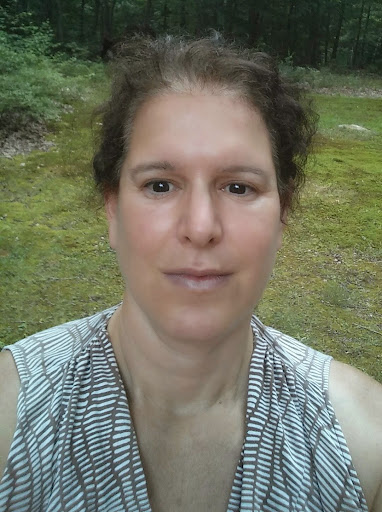Alice C Layton
age ~65
from Knoxville, TN
- Also known as:
-
- Alice C Hahn
- Alice Clayton
- Phone and address:
-
1620 Colonade Rd, Knoxville, TN 37922
(865)6913713
Alice Layton Phones & Addresses
- 1620 Colonade Rd, Knoxville, TN 37922 • (865)6913713
- Lafayette, IN
Work
-
Company:University of tennessee
-
Position:Research associate professor
Industries
Higher Education
Resumes

Research Associate Professor At University Of Tennessee
view sourcePosition:
Research Associate Professor at University of Tennessee
Location:
Knoxville, Tennessee Area
Industry:
Higher Education
Work:
University of Tennessee
Research Associate Professor
Research Associate Professor
Us Patents
-
Compositions And Methods For Detecting Estrogenic Agents In A Sample
view source -
US Patent:20060008837, Jan 12, 2006
-
Filed:Aug 1, 2005
-
Appl. No.:11/194172
-
Inventors:John Sanseverino - Knoxville TN, US
Alice Layton - Knoxville TN, US
Rakesh Gupta - New Delhi, IN
Gary Sayler - Blaine TN, US
Steven Ripp - Knoxville TN, US
Stacey Patterson - Tampa FL, US -
International Classification:C12Q 1/68
C12N 1/16 -
US Classification:435006000, 435254100
-
Abstract:The luxA, B, C, D, and E genes from have been introduced into bioluminescent yeast cells.
-
Bioreporter For Detection Of Microbes
view source -
US Patent:20070072174, Mar 29, 2007
-
Filed:Sep 28, 2005
-
Appl. No.:11/237517
-
Inventors:Gary Sayler - Blaine TN, US
Steven Ripp - Knoxville TN, US
Alice Layton - Knoxville TN, US -
International Classification:C12Q 1/70
C12Q 1/68 -
US Classification:435005000, 435006000, 977802000
-
Abstract:A recombinant phage system has been developed for the rapid detection of bacteria, particularly fecal coliform indicator bacteria. The systems of the invention link phage infection events to quorum sensing signal molecule biosynthesis and bioluminescent bioreporter induction, facilitating the detection of pathogens that may be present in low numbers. The phage-based systems of the invention maintain specificity for the pathogen while still producing significant signal amplification for sensitive and quantitative detection. The systems require only the combination of sample with phage and bioreporter organisms; no extraneous addition of any substrates or user intervention of any kind is necessary, making this approach significantly less technical than standard molecular or immunological methods.
-
Bioremediation Process Design Utilizing In Situ Soil Washing
view source -
US Patent:56187270, Apr 8, 1997
-
Filed:Mar 6, 1995
-
Appl. No.:8/399980
-
Inventors:Curtis A. Lajoie - Rockwood TN
Alice C. Layton - Knoxville TN
Gary S. Sayler - Blaine TN -
Assignee:University of Tennessee Research Corporation - Knoxville TN
-
International Classification:B09B 300
-
US Classification:4352625
-
Abstract:New strains of microorganisms which posses the dual capabilities for growth on surfactants and degradation of polychlorinated biphenyls are used in combination with soil washing for PCB bioremediation. Soil to be treated is washed with a surfactant to solubilize the generally hydrophobic contaminants. The surfactant solution is then treated in a bioreactor with the microorganisms. As the surfactant is degraded, the residual desolubilized contaminants are adsorbed onto an inert substrate, which is removed from the effluent and can be recycled to the bioreactor.
-
Bioluminescent Reporter Bacterium
view source -
US Patent:61106615, Aug 29, 2000
-
Filed:Oct 2, 1997
-
Appl. No.:8/944934
-
Inventors:Curtis A. Lajoie - Rockwood TN
Christine Jo Kelly - Philadelphia TN
Alice C. Layton - Knoxville TN
Gary S. Sayler - Blain TN -
Assignee:Eastman Chemical Company - Kingsport TN
-
International Classification:C12Q 100
C12Q 166
C12Q 102 -
US Classification:435 4
-
Abstract:The present invention provides a reporter bacterium, comprising a bacterium that occurs naturally in a biological sludge and that contains a nucleic acid that encodes a reporter protein not found in the naturally occurring bacterium. The nucleic acid can encode a bioluminescent reporter protein. A method and apparatus are also provided for detecting the presence of toxicity in a wastewater treatment influent stream, comprising contacting the influent with a reporter bacterium of the present invention; monitoring the expression of the reporter protein by the reporter bacterium; and correlating a reduction in the expression of the reporter protein with the presence of toxicity. In an additional embodiment, the present invention provides a method and apparatus for determining the effect of a known dose of an oxidative phosphorylation decoupling agent on biological wastewater sludge, comprising contacting a sample of the sludge containing a known dose of the decoupling agent and a control sample, with a reporter bacterium of the present invention; comparing the signal output by the reporter bacteria in the sludge sample containing the decoupling agent with the signal output by the reporter bacteria in the sludge sample not containing the decoupling agent; and correlating a decrease in signal output in the decoupled sample as compared to the signal output in the control sample with an action of the decoupling agent, whereby the effect of the known dose of the decoupling agent is determined.
-
Zoogloeal And Hyphomicrobium Spp. Nucleic Acids
view source -
US Patent:6124094, Sep 26, 2000
-
Filed:Oct 17, 1997
-
Appl. No.:8/953171
-
Inventors:Curtis A. Lajoie - Rockwood TN
Christine Jo Kelly - Philadelphia TN
Alice C. Layton - Knoxville TN
Gary S. Sayler - Blain TN
Raymond Stapleton - Knoxville TN -
Assignee:Eastman Chemical Company - Kingsport TN
-
International Classification:C12Q 168
-
US Classification:435 6
-
Abstract:The invention provides two new zoogloeal strains, mz1t and mz2t. The invention provides an isolated nucleic acid consisting of the nucleic acid of SEQ ID NO:1. Examples of nucleic acids of mz1t include SEQ ID NO:2 and SEQ ID NO:3. An example of a nucleic acid of mz2t is SEQ ID NO:4. The invention also provides an isolated nucleic acid consisting of the nucleic acid of SEQ ID NO:5. A method of detecting the presence of zoogloeal clusters in a wastewater sample is provided, comprising: a) contacting RNA from a sample of the wastewater with a nucleic acid comprising the nucleic acid of SEQ ID Nos:1,2,3,4 or 5 under conditions that permit specific hybridization; and b) detecting the presence of hybridization, the presence of hybridization indicating the presence of zoogloeal clusters. A new Hyphomicrobium spp. strain, designated M3, is provided herein.

Alice Layton
view source
Alice Layton
view source
Alice Layton
view source
Alice Layton
view sourceClassmates

Alice Layton (Serrano)
view sourceSchools:
Belvedere Junior High School Los Angeles CA 1964-1967

Mary Alice Layton | Slipp...
view sourceGoogleplus

Alice Layton

Alice Layton

Alice Layton
Youtube
Get Report for Alice C Layton from Knoxville, TN, age ~65





